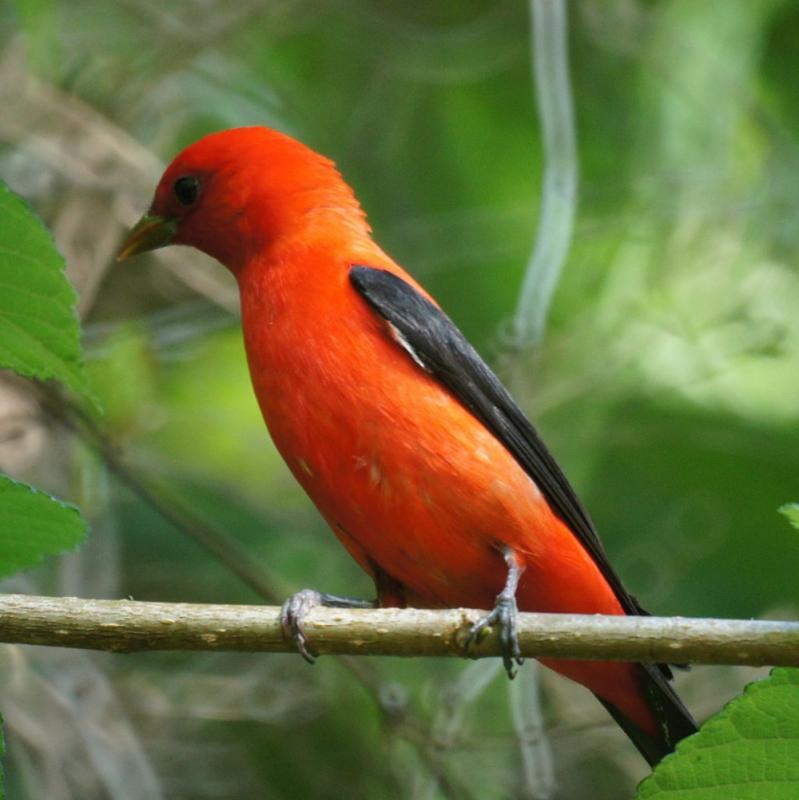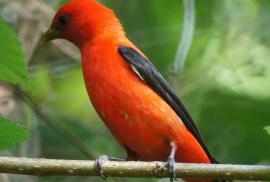Guide to Boreal Birds
Overview
The brilliantly colored male Scarlet Tanager gleams in the sunlight but is often difficult to see in thick foliage, especially if the bird is motionless or moving slowly from branch to branch high up in the tree canopy. It is conspicuous only when perched on a dead tree limb or when feeding on the ground during a cold, rainy spell. During late summer or early autumn, some of the males may show a patchwork plumage of red and green as they undergo a molt to olive green, except for their wings and tails, which remain black throughout the winter.
Description
7 1/2" (19 cm). In breeding plumage, male brilliant scarlet with black wings and tail. In nonbreeding plumage, female and male olive green; male has black wings.
Voice
Song a hurried, burry, repetitive warble, somewhat like that of a robin. Call note an emphatic, nasal chip-bang.
Nesting
3 or 4 brown-spotted greenish eggs in a shallow nest of twigs and stems lined with grass and placed on a horizontal branch.
Habitat
Chiefly mature woodlands, especially oak and pine.
Range/Migration
The actual winter range of this species is not clearly known. Its primary habitat is middle-elevation forests in the northwestern Andes, but there is some debate as to whether this species is also prevalent in the Amazon lowlands. The major spring migratory route is across the western Gulf of Mexico; the first birds appear on U.S. soil in late March, and peak numbers occur along the Gulf coast in early April. The duration of their stay along the coast is weather-dependent: If there is fog or a significant headwind, they stay; clear weather or tailwinds cause them to move inland. The rate of northward progress in the East is tied to foliage development in deciduous forests; Scarlet Tanagers prefer to remain in areas with a well-developed upper canopy.
Breeds from extreme southeastern Canada to east-central United States. Winters in tropics.



